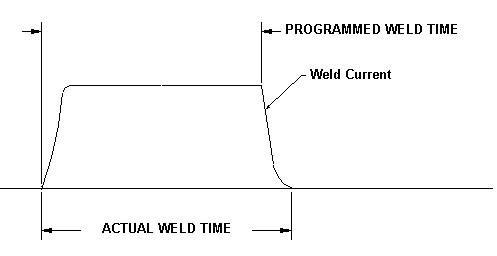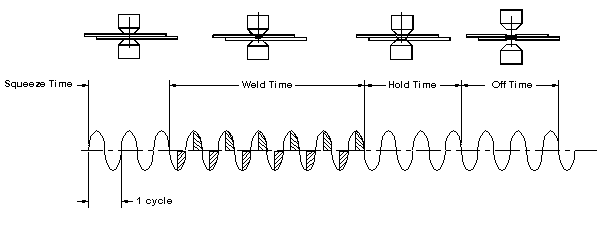Weld Time Short
Definition
For a typical weld, weld time is the amount of time welding current flows through the metal. Weld time short is when weld current is stopped too soon.
Description
Since electrical power arrives at the weld control as alternating current, at a 60-cycle per second rate (50 in some areas outside the U.S.), weld time is usually measured in cycles. This has become a convenient measuring standard for duration of weld heat.
For Direct Current (DC) welders, weld time is usually measured in cycles as a convenience. In some instances, however, with mid- and high-frequency DC welding, milliseconds are often used to measure weld time. With DC welders, there is some difference in programmed weld time and actual weld time as the Fig. 1 below shows.

In a typical single-pulse weld the metal between the electrodes is heated from room temperature to welding temperature and rapidly cooled. The growth and shape of the weld nugget is governed by the heat/cool cycles of the weld schedule (see Fig. 2).
When weld time is too short, a small nugget will result. Worst case will result in a missing weld, or a stuck weld can occur.

Detection
Significance
Quality, Workplace Issues, Cost, Downtime, Maintenance, Throughput (cycle time; PPH), are all potentially affected by this condition. Special considerations are noted below:
Cost: Part repair or additional welding operations to compensate for missing welds can add to operating costs.
Subordinate Causes
- Sealer causing insulation of contact surfaces
- Weld control malfunction
- Wrong weld schedule

